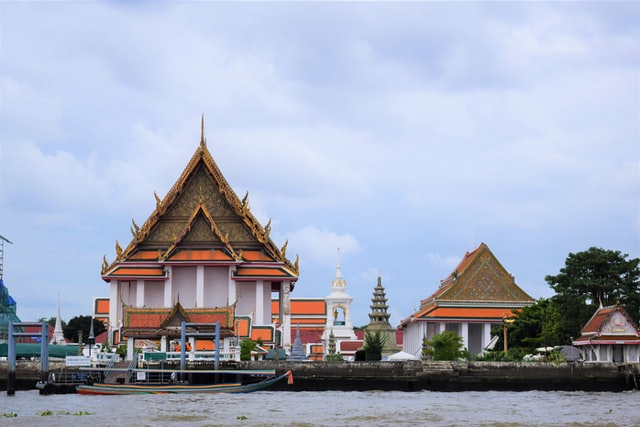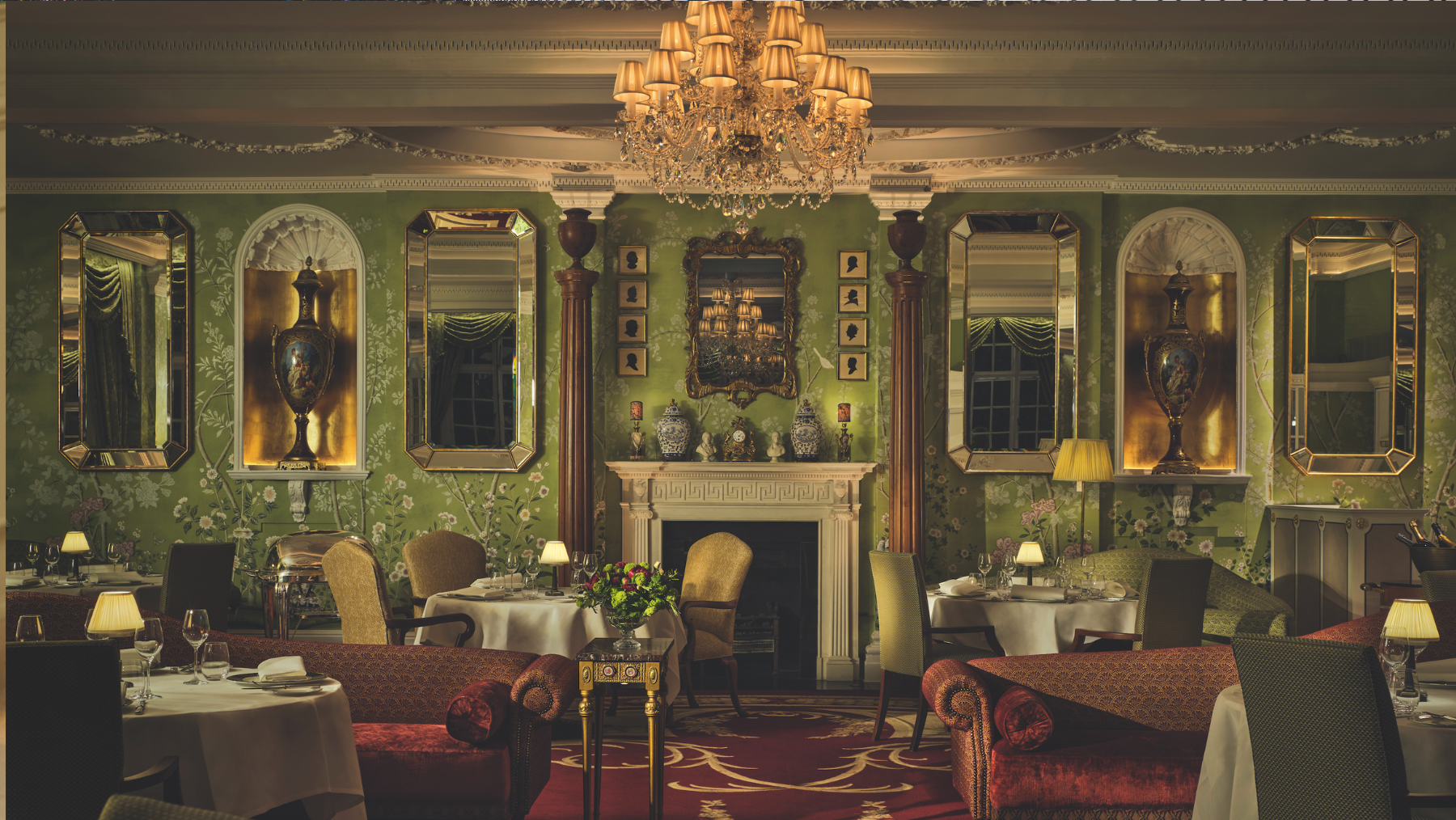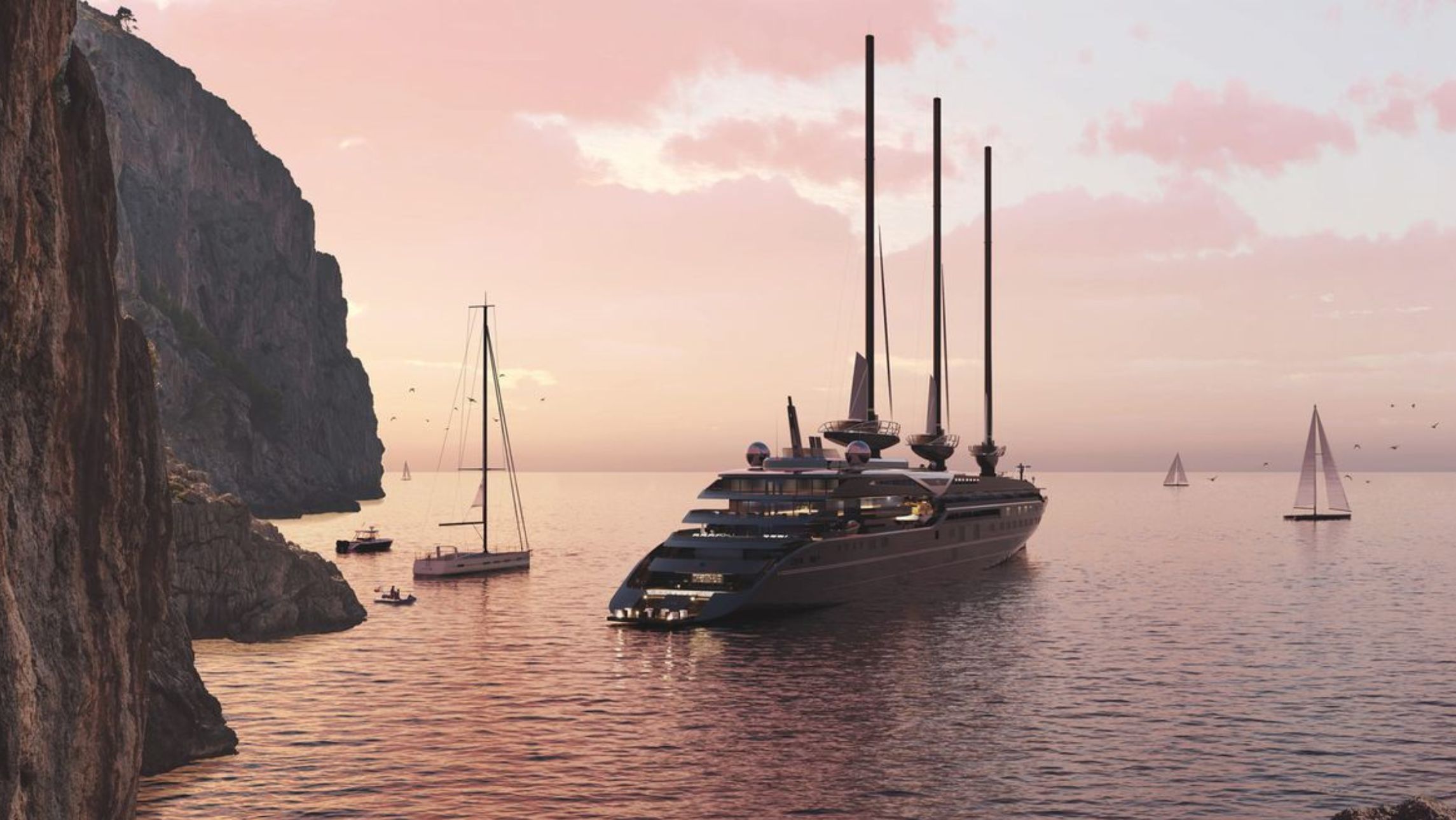Snaking through the heart of Bangkok on its way out to the Gulf, the Chao Praya River has always been the lifeblood of Thailand. The Four Seasons is giving you the chance to stay on it.
A source of food and employment for millions, it is the king of rivers – or, as it’s also known here, the River of Kings, a moniker earned by carrying monarchs by boat across their empire for centuries.
Now, on the eastern bank of the Chao Phraya River, the Four Seasons Hotel Bangkok welcomes guests to a majestic new estate worthy of royalty.
Opened during the pandemic, it’s more than just the city’s latest five-star hotel.
This immaculately constructed complex is an urban resort that will change the way you think about accommodation in Thailand’s hectic metropolis.
The river is wide and flows slowly through the city, and I start to reflect that pace not long after arriving at the Four Seasons.
The sounds of the tuk tuks and motorbikes on the street disappeared somewhere along the 150-metre-long driveway to the main entrance.
Now, I imagine I hear the breeze passing through trees and the tinkling of water. Standing in the hotel’s lobby, it’s hard to tell where walls end and where floors lead.
There’s a clear line of sight through full-length windows to the riverfront but, between here and there, I count at least ten different levels stepping down in height, through gardens, water features, dining, pools, and a wide promenade.
It’s described as “cascading architecture” and I feel the hotel – and myself – flowing from the street to the water, from inside to out, from check in to a recliner.
In fact, if it wasn’t for the check in and concierge in a sizable but discreet rounded section of the ground floor, you may not even realise this was a hotel.
Space is in abundance, with large open-air courtyards bringing natural light throughout. The emphasis is on creating an atmosphere that feels as exterior as interior, where you can breeze past artworks on your way to the various dining options, or float past shimmering floors of decorative water as you descend to the swimming pools.
A room with a view
It’s not until I head upstairs that the urban resort starts to feel more like a hotel, although the flowing textures follow me to my room.
No detail has been overlooked and, where you might have expected a plain wall, there are subtle shapes formed by different coloured wallpapers, framed by wood, with nooks and shelves decorated with lamps and vases.
The man to thank for all of this is Jean-Michel Gathy, the interior designer who has become the darling of the world of luxury accommodation.
Belgian born and Malaysia based, he has designed for most of the top hotel brands – perhaps his most famous creation is the infinity pool on the rooftop of the Marina Bay Sands in Singapore.
One of Gathy’s signature elements is water, so it’s no surprise he was drawn to a Four Seasons with 200 metres of river frontage.
“Sometimes dramatic, sometimes intimate, but always charismatic,” is how he described his vision for the hotel.
I find all those elements just in my room – from the wall of glass that offers a sweeping view of the river, to the freestanding bath from where I can also see the view, and the personal cocktail bar in case I’m in the mood to mix a drink myself.
Even with a king-sized bed, elegant chaise lounge, padded bench seating and open-plan bathroom worthy of a spa, there’s still ample space.
The smallest rooms, which include the one I’m staying in, are still an impressive 50 square metres. For guests looking for more space, there are family suites (which can have a cloth tent installed for the kids), two-bedroom suites, or even an epic suite on the top level that includes an enormous open-air terrace perfect for entertaining.
A world of dining
Bangkok tends to lie in, perhaps no surprise for a city that likes to stay up late. But the Chao Phraya River never sleeps and, as I eat my breakfast on the terrace of the Riva del Fiume restaurant, I watch the ferries and the barges making their way along the waterway.
Executive chef Andrea Accordi pops over and tells me that sometimes guests are initially disappointed with the hotel’s signature breakfast buffet because, at first glance, it doesn’t appear to be the enormous spread they expect from a five-star hotel.
But rather than focus on quantity (much of which would go to waste anyway), he has put his effort into quality ingredients and made-to-order plates, curing the fish his own way and creating a special mini breakfast pizza with an egg on top, for instance.
I fall in love with a hazelnut praline croissant roll after I discover its delicious creamy centre and am relieved to find I can get another in the afternoon at the on-site patisserie, Cafe Madeleine, where all the hotel’s pastries are baked under the guidance of executive pastry chef Andrea Bonaffini, whose resumé includes a stint at three-Michelin-starred The Fat Duck in London.
Here at the Four Seasons, the dining already has a Michelin star itself, awarded to Cantonese restaurant Yu Ting Yuan.
Specialties like Peking duck and dim sum are prepared in the lively show kitchen, while large windows looking onto the reflection pond provide a tranquil balance. You can order a la carte (including dim sum at lunch), but many guests opt for one of the tasting menus.
After breakfast, Riva del Fiume becomes an Italian restaurant for lunch and dinner, while on the other side of the swimming pools is the French-style Brasserie Palmier, its riviera décor the perfect setting for its seafood-focused menu.
And in the evenings, the hotel’s cocktail bar, BKK Social Club, serves food alongside its bespoke cocktails and suave design that are inspired by the glamour of Buenos Aires.
A creative neighbourhood
It’s only in modern times that this stretch of the Chao Phraya River has become popular with luxury accommodation. From the founding of Bangkok in the late 18th century, the river was mainly about trade, its shores filled with merchant houses, immigrant neighbourhoods, and warehouses.
It wasn’t until the 1970s, when trade moved elsewhere in the city, that many of the buildings were abandoned and hotels began to make the most of large blocks of land with water views.
In recent years, there’s been another wave of revival along the river. This time, it’s the creative industries moving into old commercial premises, bringing a vibrancy that’s also encouraging new dining and nightlife in neighbourhoods that hadn’t changed much since the end of the riverport days.
Walking the streets near the Four Seasons, through an area now dubbed the Creative District, I find vintage stores full of quirky antiques and distressed clothing, a designer furniture store, a Japanese-style izakaya down the end of a residential alley, and an unassuming bar that I’m assured is one of the coolest places in the city.
There’s a restaurant that has a Michelin star and then, just a short walk away, an old woman selling a bag of sweet bread snacks for about 30 cents.
What I find impressive is that, rather than view this hipster community covered with street art as separate, beyond the walls of the hotel, the Four Seasons has embraced its location on the edge of an edgy neighbourhood and gives guests tips on the best places to visit and even takes tours through it.
The Four Seasons Hotel on the Chao Phraya River may well be an urban resort, it may be somewhere perfectly comfortable with enough dining options that you don’t need to leave. But just as it embraces the river, it’s worth exploring the surrounding neighbourhood and embracing what the river has given to Bangkok.
For regular visitors to Thailand who might normally stay in Sukhumvit or Silom, this is not just a refreshing new hotel, but also a new side of the city.
About the stay at the Four Seasons Bangkok
What was your favourite meal?
The jewel of the hotel may be the Michelin-starred Chinese restaurant, Yu Ting Yuan, but I have my favourite meal at Riva del Fiume, where executive chef Andrea Accordi’s Italian heritage shines through.
Thailand’s coastline inspires my starter of sea bream carpaccio with urchin, as well as a taste of pan-fried kinki fish served with razor clams and black truffle.
The ravioli filled with smoked pancetta and piennolo tomato are gorgeously wrapped gifts that I devour like a child on Christmas morning, but the highlight is the wagyu from South Australia’s Maruya Station which melts in my mouth.
What was your favourite moment?
Am I in Thailand or Argentina? It can sometimes be hard to tell at BKK Social Club, the hotel’s flagship bar.
It’s designed to evoke a timeless essence of decadent Buenos Aires, yet still capture the vibrancy of Bangkok’s nightlife. Sitting at the bar, I chat with the mixologists as I take sips of Evita – a cocktail with rum, Campari, and Aperol that, perhaps appropriately, is refreshingly sweet with just a hint of sour.
I snack on BBQ pork empanadas (although I also eye off the lobster tacos) and wonder why you would ever go out elsewhere.
What should I pack?
While elegance flows through every aspect of the Four Seasons Bangkok, there’s still a welcoming casual atmosphere.
Shorts won’t seem out of place during the humidity of the day, with smart linen and comfortable dresses a good choice for a sunset drink and al fresco dinner. If you’re looking for an excuse to dress up, BKK Social Club attracts a trendy local crowd in the evening.
To explore the city, I recommend bringing a bag to carry things like water, sun protection, and a camera. Although taxis are cheap and there’s frequent public transport, good walking shoes will let you explore some more authentic neighbourhoods.
The lowdown
The Four Seasons Bangkok at Chao Phraya River is about 40 minutes’ drive from the main Suvarnabhumi Airport.
To get around the city, it’s about 10 minutes in a taxi to Silom and 15 minutes to Sukhumvit.
The price for a deluxe room starts at about $600 a night and a suite begins at around $1200 a night.
The excellent buffet breakfast is about $50 per person. There’s 24-hour in-room dining, a complimentary boat transfer to public transport, and the concierge can arrange tours, including of the local arts and food scene. More details are available at fourseasons.com/bangkok.












1 thought on “REVIEW: Four Seasons Bangkok Hotel is a palace on the king of rivers”
Comments are closed.